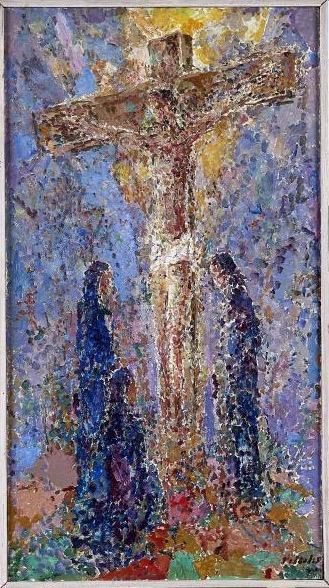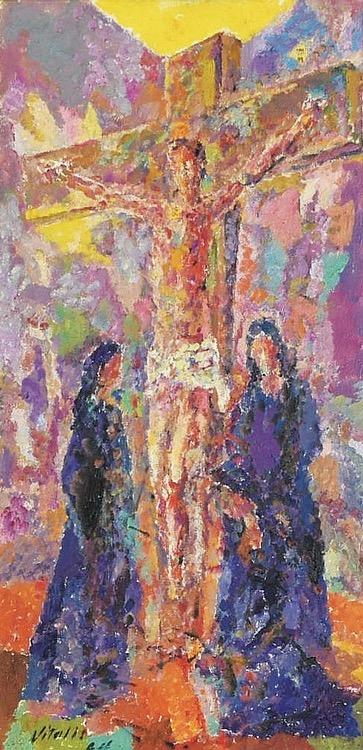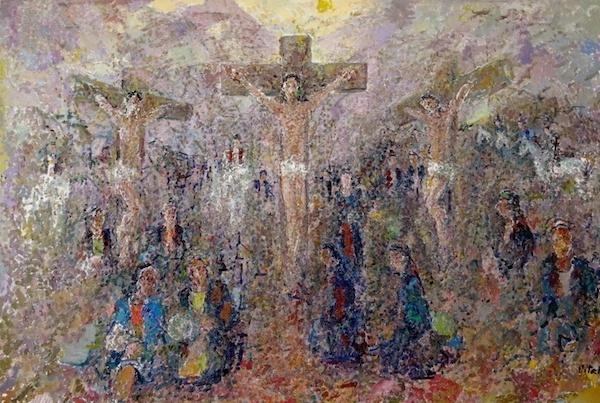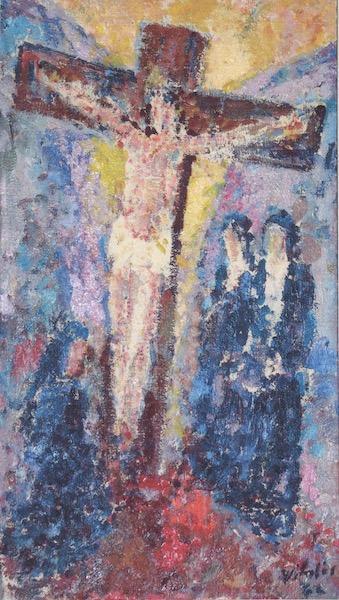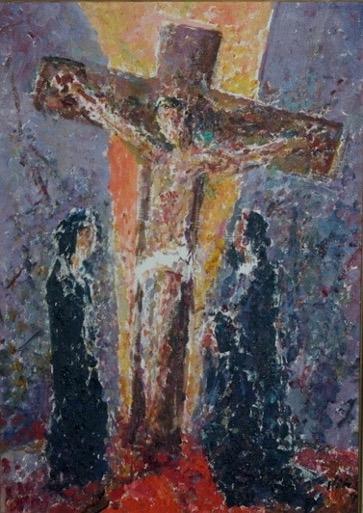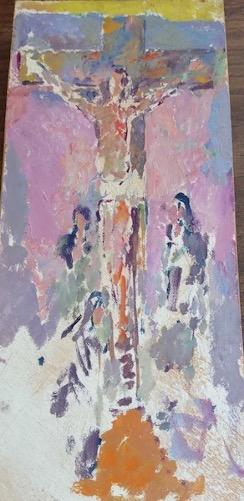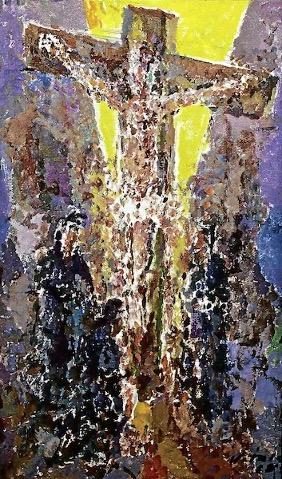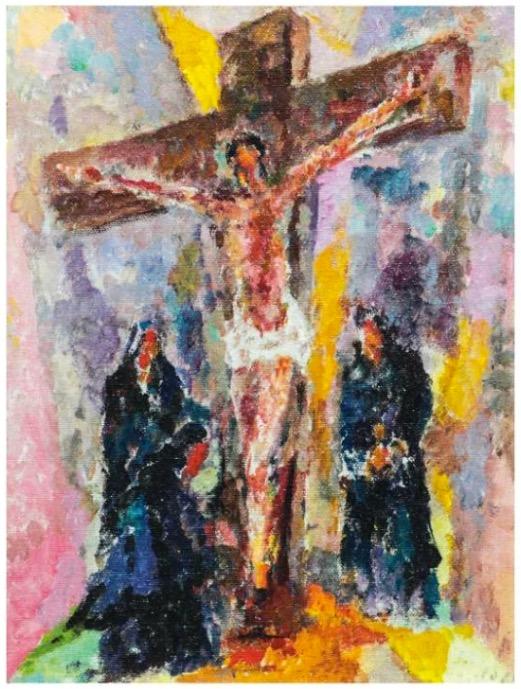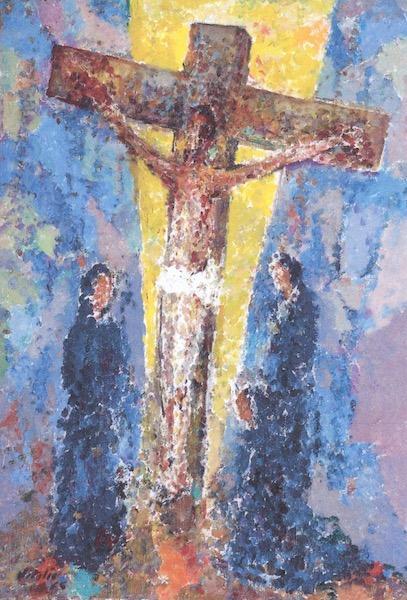
VITALIS painted many “crucifixions” which have the particularity of always being constructed in the same way.
First of all, the Christ on a cross, with his heart bleeding, logically fills the centre of the picture. Only the perspective of the cross can vary, usually to the right. Then three figures, with female figures, accompany Christ. In fact, they are the Virgin Mary, Mary Magdalene and probably Saint John (often described as having a female character in the Gospels). And systematically, two figures stand on either side of the cross, while the third kneels, sometimes to the left of the cross, sometimes to the right. Finally, a ray of bright light, yellow or orange, descends from the sky and envelops Christ.
This theme of the crucifixion appears late in VITALIS’ work, the first known painting dating from 1960 (VITALIS was then 62 years old). Moreover, it is always executed in pointillist style.
Crucifixion – 1972
Crucifixion – 1980
Crucifixion – 1964
Christ en croix – 1975
Crucifixion – 1974
C’est une représentation originale de la crucifixion par VITALIS : nous sommes sur le Mont Golgotha, gardé par des soldats romains à cheval. Ce tableau a fait l’objet d’une analyse critique dans le catalogue de l’exposition rétrospective à Manille de 1986:
” En 1974, le thème de la « Crucifixion » est inhabituel, réalisé sur une grande toile représentant la scène entière avec les trois personnages crucifiés et une foule en deuil en-dessous d’eux. Ce qui frappe, c’est l’utilisation monochromatique de tons violet clair ou lavande, la couleur utilisée pour les ombres dans la tradition impressionniste, de sorte que l’effet, dans ce contexte, est une peinture au négatif, composée d’ombres et de formes sombres, signifiant le deuil, la perte et la mort. Les touches claires et transparentes confèrent de la délicatesse et une subtile émotion au sujet.”
Crucifixion – 1966
Crucifixion -1970
